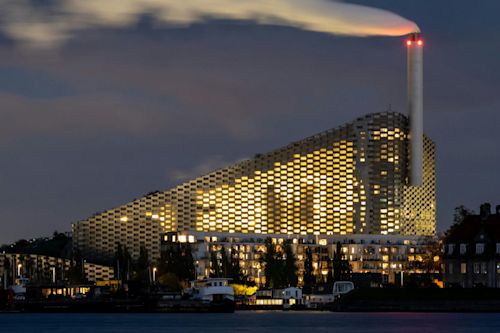Spending One Week in a Wheelchair: The Challenge of Designing Barrier-Free Homes and Workplaces
At the end of the film ‘Notting Hill’, Bella, the girl in a wheelchair played by Gina McKee, claims to be a journalist working on a report on access to London hotels for people with disabilities. The receptionist’s eyes widen and he immediately shares the information he had initially refused to give. This scene offers a pointed, accurate critique of the prevalent accessibility issues in many buildings and public establishments, even in the most developed countries.
Universal accessibility ensures that environments, processes, goods, products, and services are accessible to all, allowing everyone to participate autonomously and equally. This goal presents numerous challenges but also opportunities that ultimately benefit everyone.
In 2003, the prestigious American architect Michael Graves suffered from a viral infection in the spinal cord that put him in a wheelchair and threatened his life. Until his death in 2015, he championed inclusive architecture, which emphasizes personalized design as essential for adapting environments to those with limited mobility: “I asked my design team to spend a week in a wheelchair.” An inclusive approach that is gaining new momentum today.
Removing Barriers to Access

Recently, the Royal Institute of British Architects (RIBA) published a series of guidelines to ensure that accessibility and inclusion are integral to every stage of a building’s design and construction process. The core premise is to consider human diversity throughout the design process, aiming to eliminate barriers that restrict access to living and working environments.
According to Fazilet Hadi, policy director at Disability Rights UK, “Disabled people make up over 20% of the population and it is essential that housing, workplaces, public buildings, retail and public spaces are all shaped with us in mind.” Many individuals with additional health needs live in inadequate housing, which impedes their ability to live independently.
The RIBA guidelines are not the first of their kind in the Anglosphere. The Americans with Disabilities Act (ADA) of 1990 already set not only a nation-wide but an international standard. Its guiding principle was straightforward: public spaces should be accessible to everyone who wishes to use them. Wherever there was a staircase, a ramp or an elevator should also be provided
Turning Needs into a Source of Inspiration

A truly inclusive approach to architecture and construction must address the specific needs of users across various contexts. People in wheelchairs frequently encounter frustrating barriers that prevent them from functioning as they should, not only in their homes and workplaces but also on streets, in public buildings, and commercial establishments.
When legislation mandates accessibility measures, the results often feel like mere patches—obligatory afterthoughts that disrupt aesthetics. For instance, a ramp might function well but visually appear as a disruptive crack in a sleek, flat structure. Something irregular, that doesn’t quite fit.
Rather than viewing the demands of wheelchair users as mere obstacles, architects and designers should see them as sources of inspiration. Michael Graves exemplified this by understanding and embracing everyone’s needs, even the most specific ones, employing personalized design strategies that ensure inclusivity for all user groups.
It’s reasonable to assert that a better-designed environment benefits everyone, not just those with disabilities, the elderly, or the ill. As Graves noted, ‘Well-designed places and objects can foster healing, whereas poor design can hinder it.’ We need buildings, rooms, and objects that are intuitive and easy to use, achieved through designs that originate from sensitivity and empathy to truly transform how accessible spaces are.
Ergonomic Solutions with a Holistic Approach

A house designed for wheelchair users should ideally have no stairs. Corridors need to be wide enough to facilitate easy passage, and bathrooms and showers must be accessible and navigable. Windows should be positioned lower than standard to provide street views, and sliding doors are preferred for easier operation.
Walls should have protective coverings to prevent damage from wheelchair rubs. Appliances must be positioned for easy reach, and tables should be at least 70 cm high to accommodate wheelchairs, allowing anyone to comfortably cross their legs underneath.
By working directly with the individual and their family, architects can adopt ergonomic solutions and take a holistic approach that addresses the daily realities of these users. This approach extends to designing offices and workplaces, where the need for accessibility surpasses just adding ramps and elevators.
This involves designing sufficiently wide corridors with ample circulation space, replacing barriers with gentle ramps, and installing adjustable-height desks in well-lit rooms. Parking spaces should be wide enough to allow easy vehicle access for all, regardless of wheelchair use. Ultimately, this inclusive and meticulous planning of spaces and fixtures benefits all users.
Increasingly Accessible Cities

Cities are increasingly focusing on improving accessibility to become more inclusive destinations. A study by Visualfy ranks Spain among the top accessible countries for people with disabilities, with five cities leading the effort. Notably, Granada is making significant strides to become a benchmark for accessible tourism.
Already in 1996, the Andalusian city launched a municipal ordinance for Accessibility and the Elimination of Architectural, Urban, Transport and Communication Barriers, and has recently started a project to establish Spain’s first public institution seal for universal accessibility. This project involved professionals, experts, researchers, and individuals with various disabilities who helped validate the developed questionnaires and worksheets.
Is all this economically feasible? According to Catalan architect Enrique Rovira-Beleta, who specializes in ‘unnoticed accessibility,’ the notion that designing enabled spaces increases costs is a misconception. ‘I teach architecture students how to design accessible bathrooms within four square meters,’ he explains. He also critiques the standard separation of bathrooms into male, female, and those for people with reduced mobility, questioning why not all bathrooms are made accessible to everyone. ‘It’s often harder to convince people about simple solutions than to implement them.’



